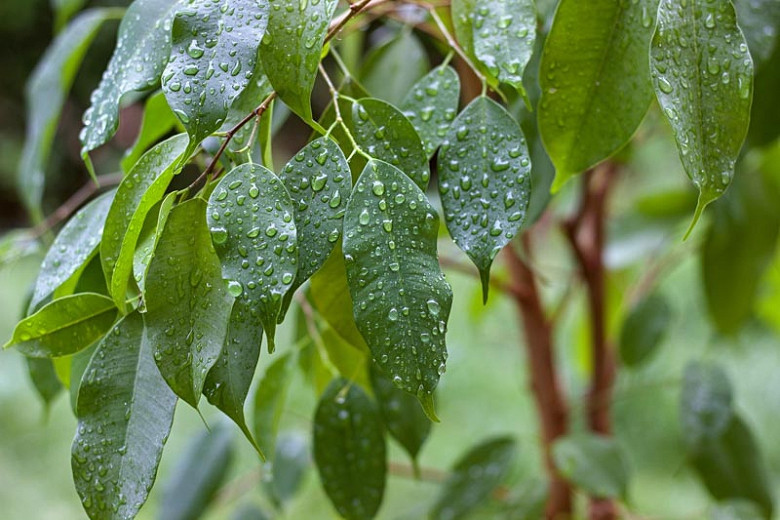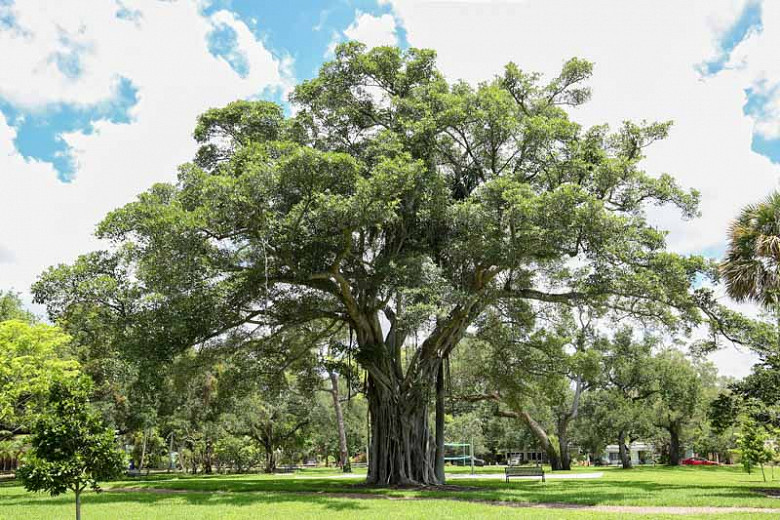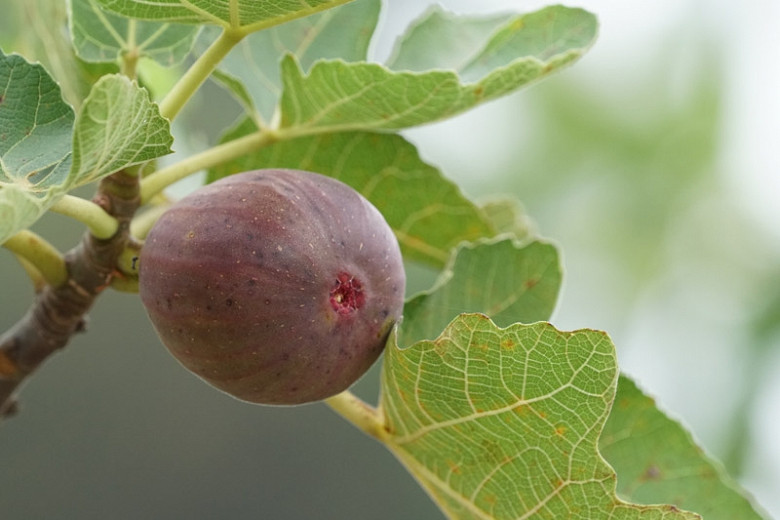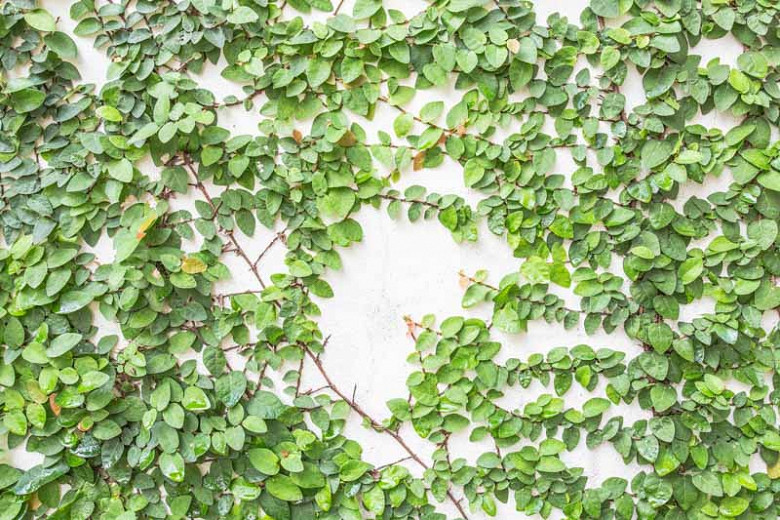Ficus benjamina (Weeping Fig)
Extremely popular as a houseplant, Ficus benjamina (Weeping Fig) is an evergreen shrub or tree adorned with a dense, rounded canopy and gracefully drooping branches. Glossy, slender-pointed ovate leaves, 5 in. long (12 cm) generously clothe the long branches. Tiny, deep red figs, turning purplish black, appear on outdoor plants, but they rarely appear on indoor plants. Weeping Fig is widely grown in the tropics where it becomes huge and massive. Aerial roots descend from the branches, touch the ground and take root, eventually forming numerous sturdy trunks which can clog a landscape. In warm climates devoid of high humidity, the tree does not develop aerial roots but still grows to a respectable height. Grown indoors, Weeping Fig grows much smaller and makes an attractive houseplant.
Requirements
| Hardiness | 10 – 12 |
|---|---|
| Heat Zones | 10 – 12 |
| Climate Zones | 13, 23, 24, H1, H2 |
| Plant Type | Trees |
| Plant Family | Ficus |
| Exposure | Full Sun, Partial Sun |
| Season of Interest | Spring (Early,Mid,Late)Summer (Early,Mid,Late)FallWinter |
| Height | 40' – 50' (12m – 15m) |
| Spread | 25' – 30' (7.5m – 9m) |
| Water Needs | Average |
| Maintenance | Low |
| Soil Type | Chalk, Clay, Loam, Sand |
| Soil pH | Acid, Alkaline, Neutral |
| Soil Drainage | Moist but Well-Drained |
| Characteristics | Plant of Merit, Showy, Evergreen, Fruit & Berries |
| Native Plants | Australia |
| Tolerance | Drought |
| Garden Uses | Patio and Containers |
| Garden Styles | Mediterranean Garden |







